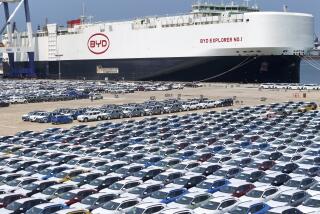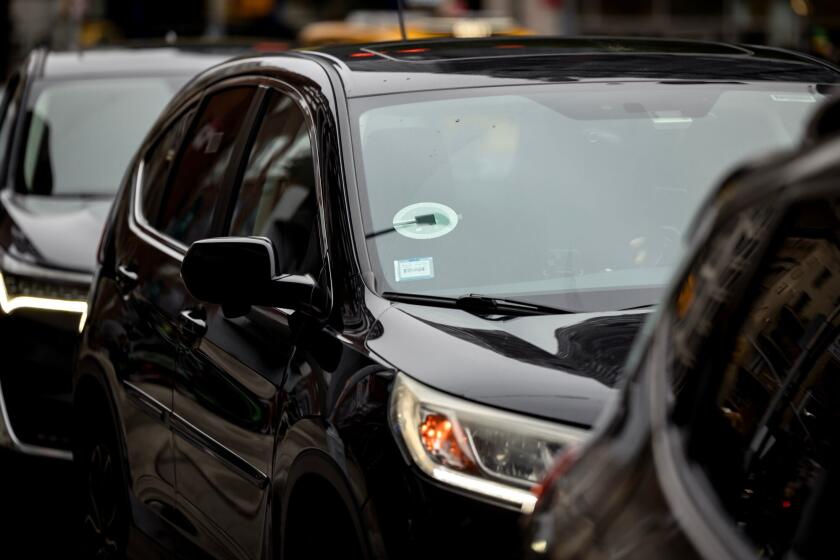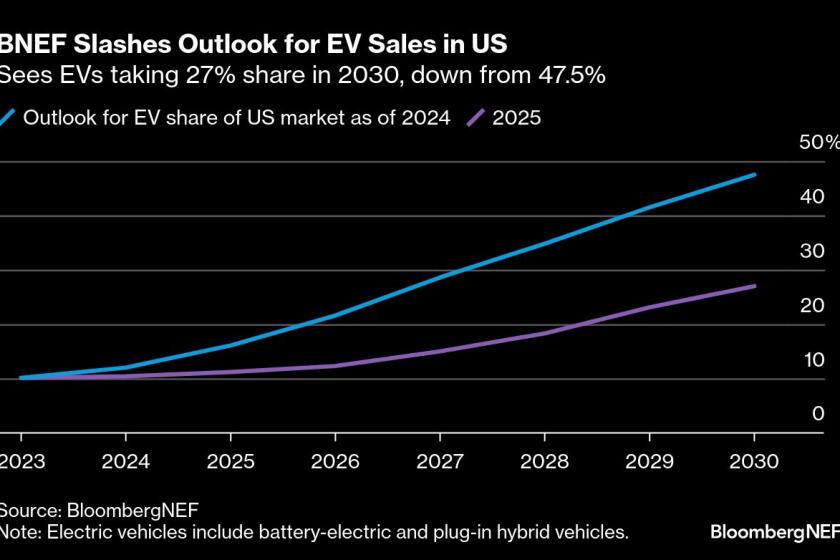South Korea’s Car Manufacturers Hope for Recovery : Autos: Vehicle exports fell 38% last year, in part because of Japan’s weak yen. Increased domestic demand could help.
- Share via
SEOUL — A weak yen is deepening the slump that South Korean car makers have found themselves in because of a drop in exports, but industry and government officials are determined to get the industry back on track.
“Despite the problems we have, car manufacturing should play a major role in creating jobs and gross national product in the future,” said Nam Chung-woo, director of the Trade Ministry’s Transportation Machinery Division.
“We learn from errors. I think our firms will surge again as strong suppliers of small cars, pushing the Japanese up-market.”
South Korean car exports, which enabled the industry to grow rapidly in the past five years, dropped 38% to 356,000 units last year from 576,000 in 1988, ministry figures show.
Overseas sales show no signs of recovery, but industry officials hope robust domestic demand will cushion the impact and allow them to more than double annual capacity to more than 4 million cars by 1996.
There are many reasons behind the export drop, including slowness in introducing new models, a high local currency and rising labor costs after strikes and disputes. But analysts say the Japanese yen’s weakness is the biggest threat.
“The won has been too overvalued, taking away our cars’ strongest power--price advantage,” said Kim So-rim, research manager of the Korea Automotive Manufacturers Assn.
“Many believed a won slide would spell a rebound in overseas sales,” he said. “But the yen’s unexpected fall this year is now walloping our exporters.”
The yen has lost about 9% against the dollar this year, while the South Korean won has fallen less than 4% against the dollar. This had made Japanese cars relatively cheaper compared to rival Korean models.
Of the three main car producers --Hyundai Motor Co., Daewoo Motor Co. and Kia Motors Corp.--Hyundai, the biggest and export leader, has been the hardest hit by shrinking exports.
Kia, in which Ford Motor Co. has a 10% stake, and Daewoo, which is half-owned by General Motors Corp., supply cars to their U.S. partners, who market them under their own nameplates.
Hyundai, whose subcompact Excel was the best-selling import in the United States until 1988, saw its North American sales shrink to 152,600 cars in 1989, less than half the 1988 level of 359,500 cars.
Hyundai did not change the Excel model for the three years after its 1985 introduction in North America. The company also suffered a setback in its bid to break into the more profitable mid-sized car market in the United States.
Hyundai hoped to sell 80,000 Sonatas last year but sold less than half that amount, as consumers opted for better-known cars such as the Honda Accord and the Toyota Camry.
Since late last year, Hyundai has shipped a new model of the Excel, upgraded the Sonata’s engine and set up a financing arm in the United States.
“Such a move will become fruitless if the yen continues to lose its value,” however, the manufacturers association’s Kim said.
But Kim and Shin Tae-yong, senior economist at Kia Economic Research Institute, an automotive think tank, agree that South Korean firms should continue expanding their investment in production facilities and updating technology.
“Automation and mass production would be the only way to lower their cost,” Shin said.
He said South Korean domestic markets could fill the gap caused by slowing exports in the next several years.
In contrast to export performance, domestic sales rose to 220,100 vehicles in the first quarter of this year--an increase of 36% over last year’s first quarter--after a 46% jump to 763,000 last year.
Analysts generally agree that the domestic market will grow by at least 30% annually the next couple of years.






